
¡Agregado a favoritos!
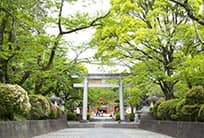
¡Agregado a favoritos!
Mount Fuji Views & Shrine
Monte Fuji (Shimizu), Japón
Duración 7 hs.
- Adultos desde: $299.00 USD
- Niños desde: $239.00 USD

| Desde | Mensaje | Reserva n.° | Fecha | |
|---|---|---|---|---|
| Centro de Comunicaciones de Norwegian | Centro de Comunicaciones de Norwegian ¡No pierdas tu reserva! | 25422881 | Abr. 1, 2014 | |
| Centro de Comunicaciones de Norwegian | Centro de Comunicaciones de Norwegian Reserva tu cena ahora mismo | 25422881 | Abr. 1, 2014 | |
| Centro de Comunicaciones de Norwegian | Centro de Comunicaciones de Norwegian ¡No pierdas tu reserva! | 25422881 | Abr. 1, 2014 | |
| Centro de Comunicaciones de Norwegian | Centro de Comunicaciones de Norwegian ¡No pierdas tu reserva! | 25422881 | Abr. 1, 2014 |
*Términos y condiciones
Paquete no disponible en viajes de menos de 5 días ni en viajes chárter.
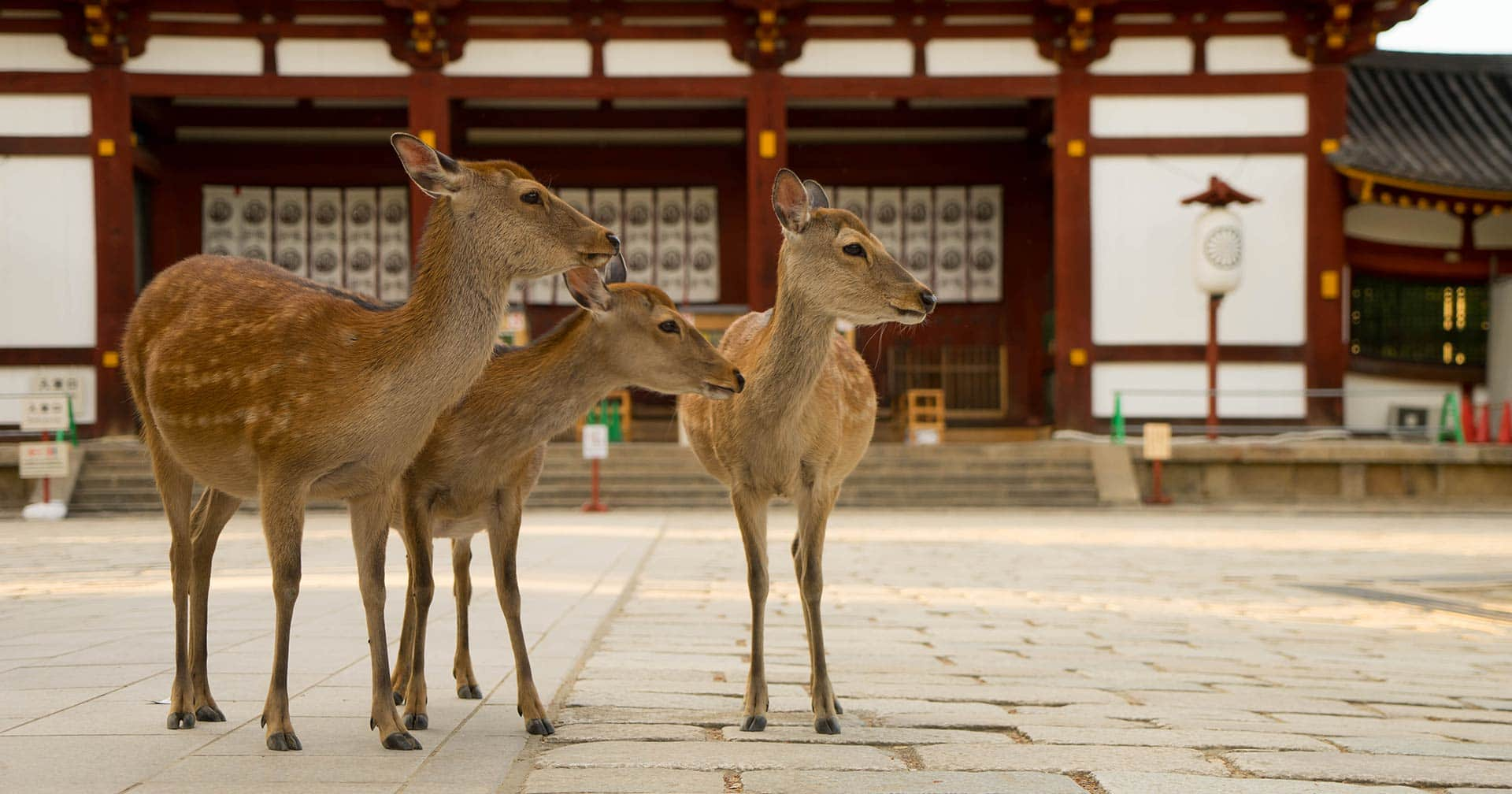
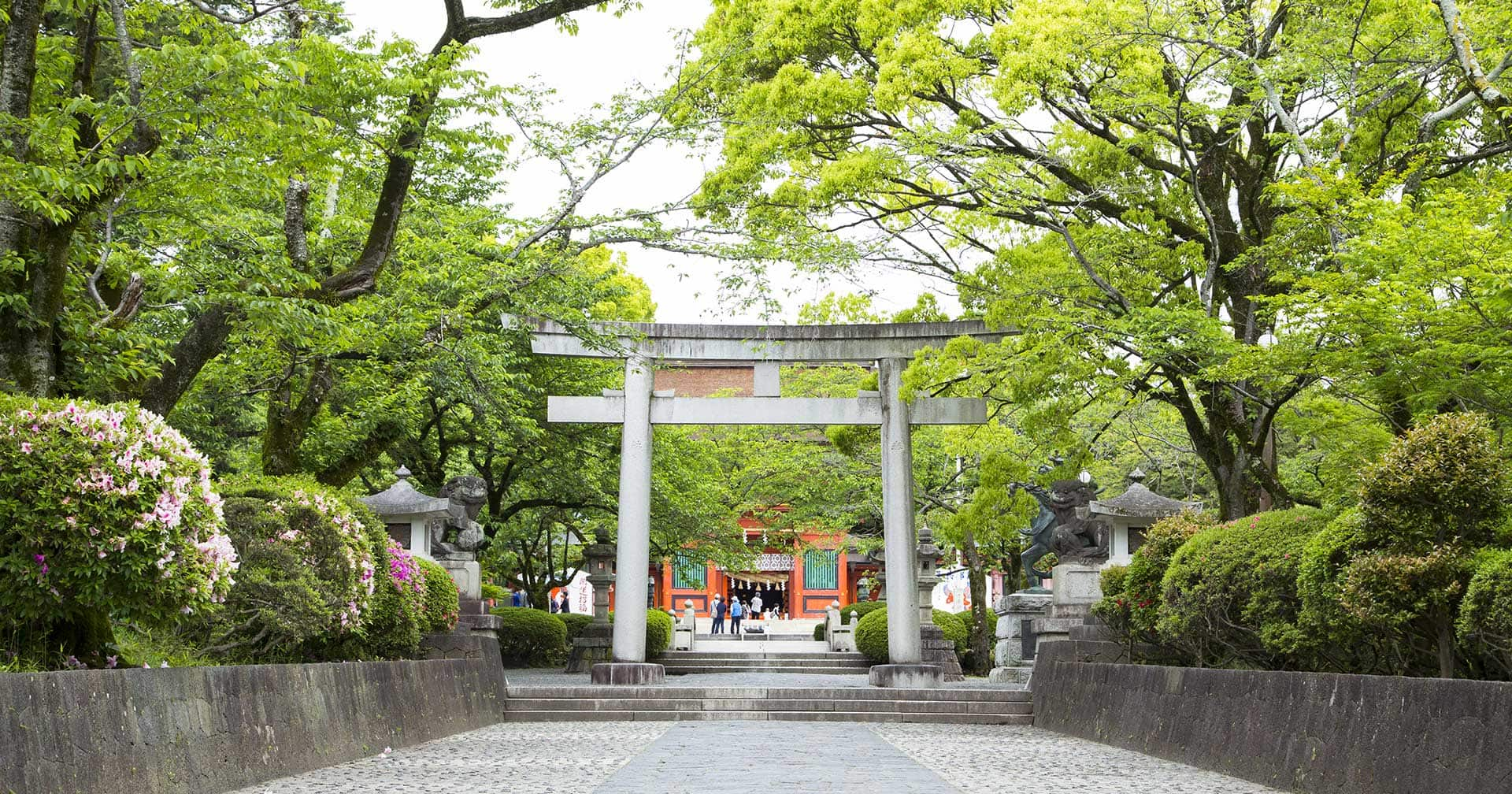

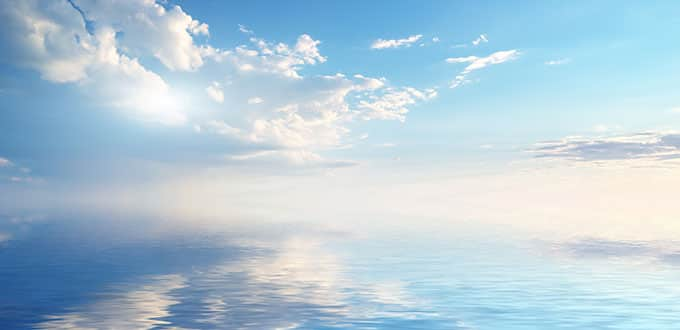



Duración 7 hs.
Visit a serene shrine and one of Japan’s most stunningly natural seaside settings, both lying in the shadow of majestic Mount Fuji, Japan’s highest mountain. Settle in for a drive into the beautiful countryside that lies in the foothills of Mount Fuji. Japan’s national symbol and one of its most extraordinary settings, Mount Fuji has been deemed a UNESCO World Heritage Site as a sacred place and source of artistic inspiration. Prior to ascending Mount Fuji, climbers often pray at Fujisan Hongu Sengen Taisha Shrine, which you’ll visit. The shrine has been considered a guardian deity that prevents natural disasters and ensures easy childbirth. More than 500 cherry trees grace the surrounding grounds. Inside, there is a pond fed by melting snow and ice from Mount Fuji. The pond has been designated a Special Natural Monument and attracts pilgrims that come to purify themselves in the clear water. Next stop is the Mt. Fuji's 2th Station, at approximately 4,700 feet. You will have chance to see dynamic view of Mt. Fuji. The 2th Station offers stellar views of the mountain's magnificence. Last stop is the Mt.Fuji World Heritage Centre, opened in December 2017 and consists of three buildings. The central building is covered with the wood lattice and characteristic shaped of the inverted cone. This wood lattice is made from Fuji cypress. From the top floor, you will enjoy magnificent view of Mt. Fuji as picturesque.
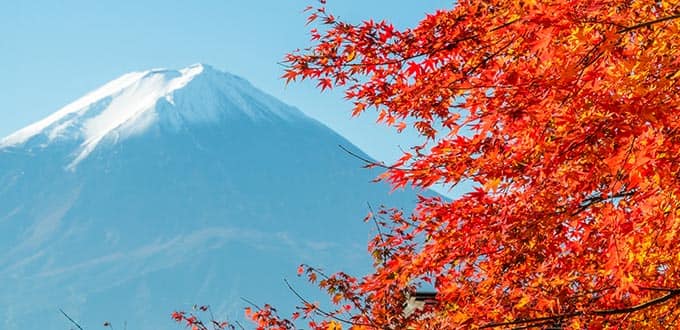
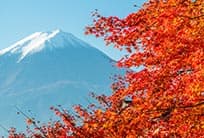
Duración 4 hs.
Sample a selection of sake made with water from Mount Fuji and then visit a heritage center dedicated to the mountain and its influence throughout Japan.
A scenic drive through the countryside will bring you to Fuji Takasago, a sake brewery founded in 1831 at the foot of Mount Fuji, where its groundwater is most abundant. The water from the snow melt that runs off the mountain takes nearly 100 years to filter through the earth’s underground layers, leaving the water extraordinarily pure.
Following an enlightening tour of the brewery, where you will watch rice being turned into sake, you will be offered a selection of Fuji Takasago’s rice wines. During the sampling, you may notice that the Mount Fuji water imparts a mild taste to the sake. Being high in amino acids, these sakes are also rich in umami, a flavor associated with rice wine.
You will gain a different perspective of Japan’s most celebrated peak at the Mount Fuji World Heritage Center nearby. Its exhibitions include Japanese art and literature that the mountain has inspired and paper screens that show Mount Fuji changing with the seasons. Another highlight is the building’s inverted lattice cone sculpture that mimics the shape of Mount Fuji when viewed in the reflecting pool.
The center was named to recognize UNESCO declaring Mount Fuji to be a World Heritage site for its solitary beauty, iconic shape and deep impact on Western art. It may well be the world’s most famous stratovolcano.
menos

Duración 4 hs.
Spend hours shopping in Dotonbori, a vibrant entertainment district in downtown Osaka that boasts a seemingly endless number of stores and restaurants in a compact, easy-to-walk eight-block area. After being dropping off in the heart of the district, you will be free to explore for about three hours. You can stay longer if you wish and then return to the ship on your own. Either way, you will be awed by the dazzling visuals, as Dotonbori is known for its giant, often three-dimensional billboards adorned with everything from a giant crab with moving legs to Uncle Karl, the wide-mouthed mascot for a popular brand of cheese puffs. The sights couldn’t be more flamboyant and over-the-top. The collection of stores is just as spectacular. Most every imaginable type of merchandise can be found in Dotonbori, from exquisite designer fashions to quirky souvenirs. Sushi is a great choice if you are dining.
HIGHLIGHTS
• Spend hours browsing the energetic, visually stunning Dotonbori shopping district.
• Snap photos of the outlandish, oversized and inescapable billboards in Dotonbori.
• Be awed by the huge variety of merchandise and dining options.


Duración 3 hs.
Browse a waterfront market where an extraordinary variety of seafood is displayed and prepare your own lunch of sushi at a nearby venue. You can’t help but be awed by the sheer volume of seafood that comes right off the docks at the Kashi-no-Ichi market. Although you will see familiar items such as whole tuna and oysters in the shell, chances are you will see an abundance of other items that you may not recognize. Not to worry. The guide will translate their names on the signage, which are in Japanese. As an introduction to the history of sushi, you will stop at the Shimizu Sushi Museum and then sit in on short lecture by a sushi chef, a position that typically takes up to 10 years of rigorous training to earn in Japan. The chef will demonstrate the basics of preparing fresh fish so you can make your own delicious sushi lunch.
HIGHLIGHTS
• Wander among the countless stalls of fresh seafood on display at the Kashi-no-Ichi market.
• Learn about sushi at a museum dedicated to it and from a veteran sushi chef.
• Watch the chef prepare sushi and then try it yourself by following the chef’s instruction.
• Dine on the fresh sushi that you have just prepared.
HELPFUL HINTS
• Dress in weather-appropriate clothing.
• Wear flat comfortable walking shoes.


Duración 4 1/2 hs.
Delve into the world of tea through hands-on experiences that will reveal the cultural importance of the beverage in Japan. Your immersion will begin at a green tea plantation, where you will head into the fields with a wicker basket and pick tea leaves. You may be surprised by which ones are ready to harvest. During the workshop that follows, you will learn how to properly brew green tea, which is known as sencha. Factors that ensure a perfect cup of tea include water temperature, the proportion of leaves to water and not disturbing the tea while it is steeping. Visiting a factory where tea is processed will enhance your understanding even further as you will watch the workers perform each step. Later, during a traditional lunch – served with tea, of course – you might reflect on how tea is more than a beverage in Japan.
HIGHLIGHTS
• Enjoy hands-on experiences that involve picking, processing and brewing green tea leaves.
• Gain insight into the world of tea that is so ingrained into the Japanese culture.
• Relax at a restaurant while savoring a traditional Japanese lunch accompanied by green tea.
HELPFUL HINTS
• Dress in weather-appropriate clothing.
• Wear flat comfortable walking shoes.
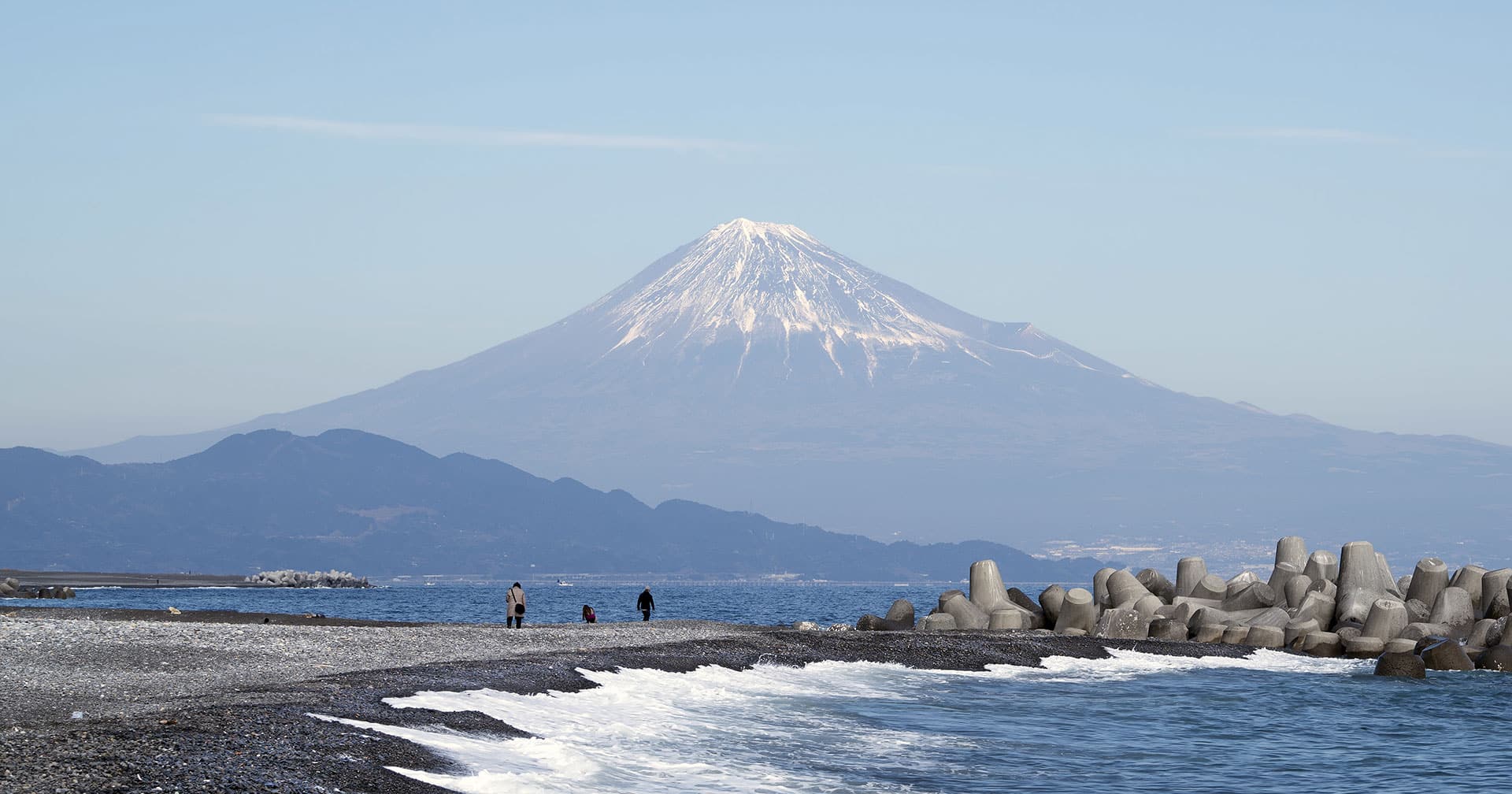
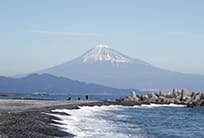
Duración 4 1/4 hs.
Delve into Japanese culture by visiting an art museum, enjoying a ritualistic tea ceremony and admiring one of the most spectacular views of sacred Mount Fuji.
Visit the Tokaido Hiroshige Art Museum in the fishing village of Yui. More than a thousand woodblock prints from Utagawa Hiroshige, a 19th-century master of the ukiyo-e genre, are beautifully displayed here. As you will discover while browsing the works of art, the ukiyo-e genre typically depicts subjects of everyday life that include landscapes, birds and flowers.
Hiroshige’s genius for landscape composition and color in works such as The Fifty-Three Stations of the Tokaido influenced European painters such as Claude Monet and Vincent Van Gogh.
At a tearoom in a nearby park, you’ll enjoy a tea ceremony. You will be served traditional green tea, but the ceremony involves more than merely the beverage. It is a ritualistic art form in which the tea must be prepared and presented in a certain manner known as the Way of Tea.
Drive to the seaside pine grove Miho no Matsubara. The grove consists of more than 50,000 pine trees, including a 650-year-old tree thought to have mythical powers. The view from the shore with Mount Fuji lording over the scenery has been rated one of the top three views in Japan.
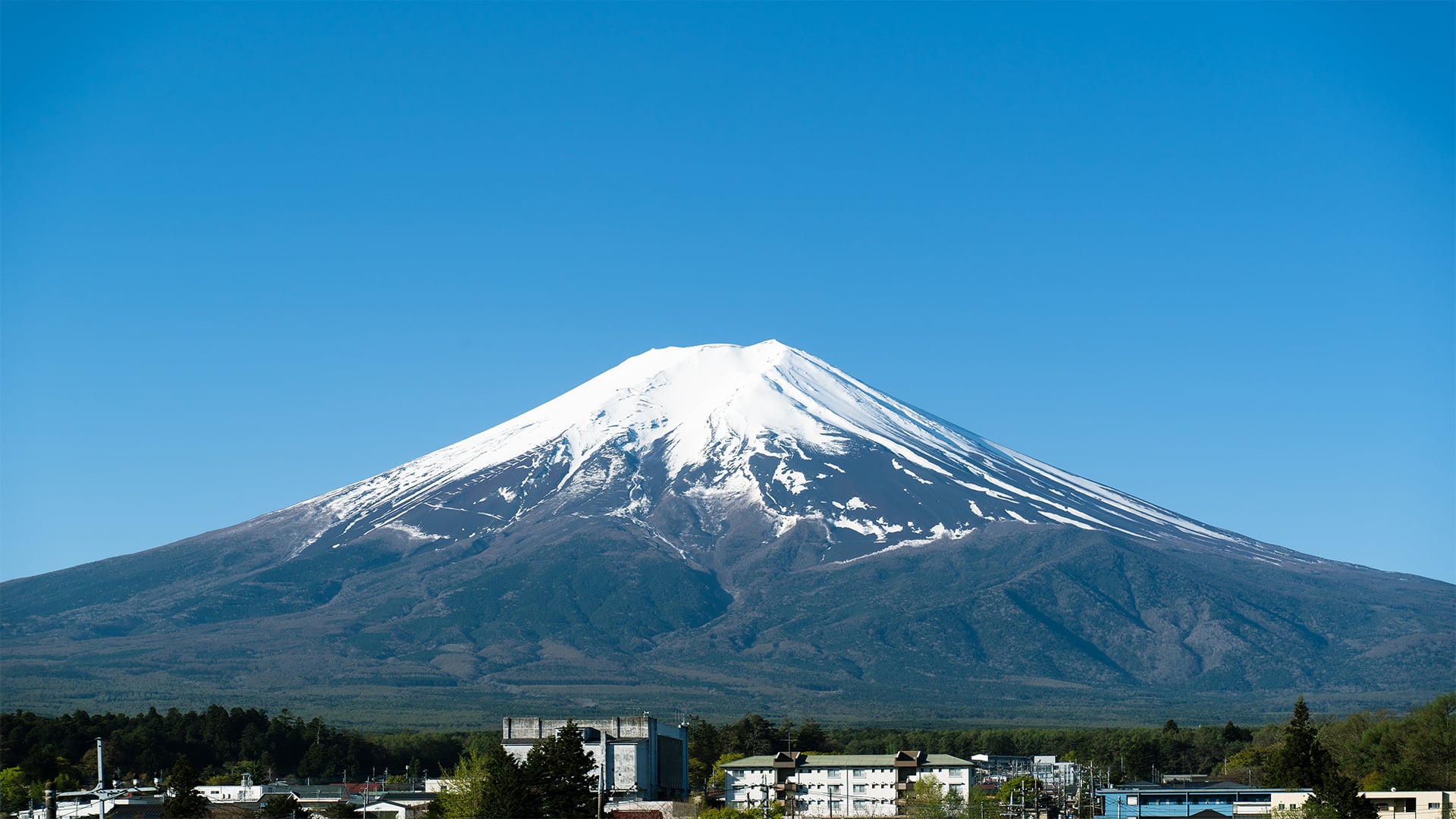
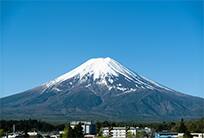
Duración 5 1/4 hs.
OVERVIEW
Marvel at glorious Suruga Bay while riding a ropeway to a hilltop Shintō shrine and then delve into the Japanese culture by making chopsticks. While some people climb the 1,000 or so steps leading to the Kunozan Toishogu shrine, you will ride ropeway. More wonders await you within the shrine complex, a collection of brightly painted ornate buildings dedicated to the shōgun that unified Japan in the early 17th century. Be sure to notice the well-armed guardian statue near the Romon gate. Stop at Nihondaira Park outlook, which offers a glorious view of Suruga Bay and majestic Mout Fuji. You will experience Japan’s creativity at Sumpu Takumi Shuku, a cultural workshop where artisans produce traditional crafts using centuries-old techniques. There you will have the opportunity to create your own pair of lacquered chopsticks by grinding and polishing.
HIGHLIGHTS
• Ride a ropeway to hilltop Shintō shrine while admiring the views of Suruga Bay.
• Browse the shrine, which is dedicated to a revered shōgun that brought peace to Japan.
• Create your own lacquered chopsticks at a workshop for traditional artisans.
HELPFUL HINTS
• Dress in weather-appropriate clothing.
• Wear flat comfortable walking shoes.
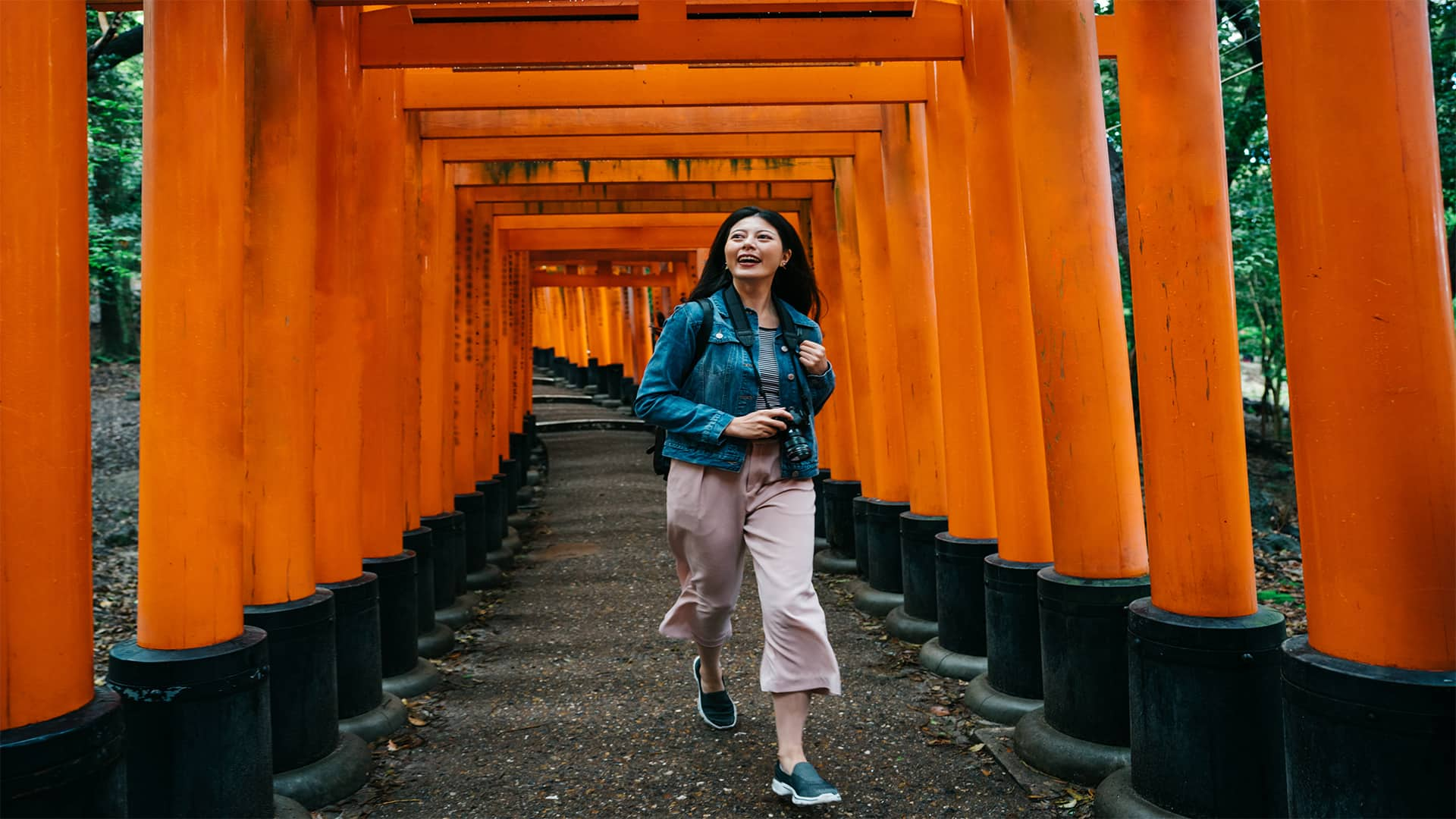
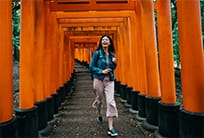
Duración 6 hs.
Delve into the culture of Kyoto at a Shinto shrine and in the city’s famed sake district, two quintessential experiences that reveal much about this former capital of Japan. The shrine Fushimi Inari Taisha is best known for its thousands of vibrant orange torii gates along a wooded hiking trail that leads to the top of Mount Inari. The names of the donors that funded the torii gates – which are dedicated to the deity of good harvest and success in business – are inscribed on them. The influence of sake will come to light in Kyoto’s Fushimi Sake District, home to numerous local distilleries that have been perfecting their craft for centuries. Here, you will learn about the production of this beloved rice wine and be invited to enjoy a sip. While snapping photos of Teradaya Inn’s exterior, you will discover its infamous past, including a deadly 1862 political clash and an 1866 assassination attempt on reformer Sakamoto Ryōma. Free time in Kyoto’s historical Fushimi Ward follows.
HIGHLIGHTS
• Tour a Shinto shrine with thousands of torii gates and walk the trail beneath them.
• Stroll through Kyoto’s historic sake district, where traditional breweries have perfected their craft for centuries.
• Pause for photos at an inn where several samurai were killed during an 1862 rebellion.
• Spend free time exploring Fushimi-ku, one of Kyoto’s many wards.
HELPFUL HINTS
• Dress in weather-appropriate clothing.
• Wear flat comfortable walking shoes.


Duración 5 hs.
OVERVIEW
Browse the bustling Kuromon Market, where you will see every imaginable gourmet delicacy, and learn to prepare your own sushi by following a chef’s instruction. The covered market holds more than 150 stores where everything from blow fish to fresh fruits to traditional sweets can be found. Expect it to be crowded and loud, which is much of the charm. Chances are, you will see fishmongers preparing fresh cuts of seafood, people dining on street food and others just milling about awed by the abundant choices. You may be offered samples, but don’t get too full as you will soon be making sushi for your lunch. The chef will show you how to prepare two styles of sushi. Nigiri sushi typically features raw fish atop a mound of hand-pressed rice. Then there is gunkan sushi, in which the rice is wrapped in a strip of seaweed to create a bowl for the various toppings.
HIGHLIGHTS
• Meander through the historical Kuroman Market, which specializes in fresh seafood.
• See some of the seafood that you may use to prepare your own sushi for lunch.
• Learn the basics of preparing sushi by following a sushi chef’s instruction.
• Dine on your lunch, which will feature nigiri and gunkan styles of sushi.
HELPFUL HINTS
• Dress in weather-appropriate clothing.
• Wear flat comfortable walking shoes.


Duración 8 1/2 hs.
Enjoy the unrivaled charm of Nara and Osaka, two of Japan's most historic cities, on this full-day tour.
It’s a scenic 90-minute drive to Nara, the oldest capital of Japan (710-784), and the cradle of Japanese arts, literature and crafts with temples and shrines that pre-date those found in Kyoto. Modeled after Changan, capital of Tang Dynasty China, the exquisite city of Nara is home to eight World Heritage Sites, and numerous art and architectural relics classified as National Treasures and Important Cultural Assets by the Japanese government.
Visit the incredible Todaiji Temple, founded in 752, and best known for its Daibutsu, a colossal statue sitting 49 feet tall, making it the world's largest Buddha statue. The eighth century statue is housed in an all-wood building, the Daibutsu-den, considered the largest wooden building in the world. Stroll through Nara Park, commonly referred to as Deer Park. The tranquil park covers 1,295 acres of woodland and is home to over 1,000 free roaming deer. Considered messengers of the gods in the Shinto religion, Nara's deer are a symbol of the city and are designated a National Natural Monument. Also visit Kasuga Taisha Shrine.
Following lunch at a nearby restaurant, you'll drive to Osaka, with a stop to visit the imposing Osaka Castle. One of Japan's most famous castles, it has massive stone foundations, wing-tipped roofs with gilded decorations.
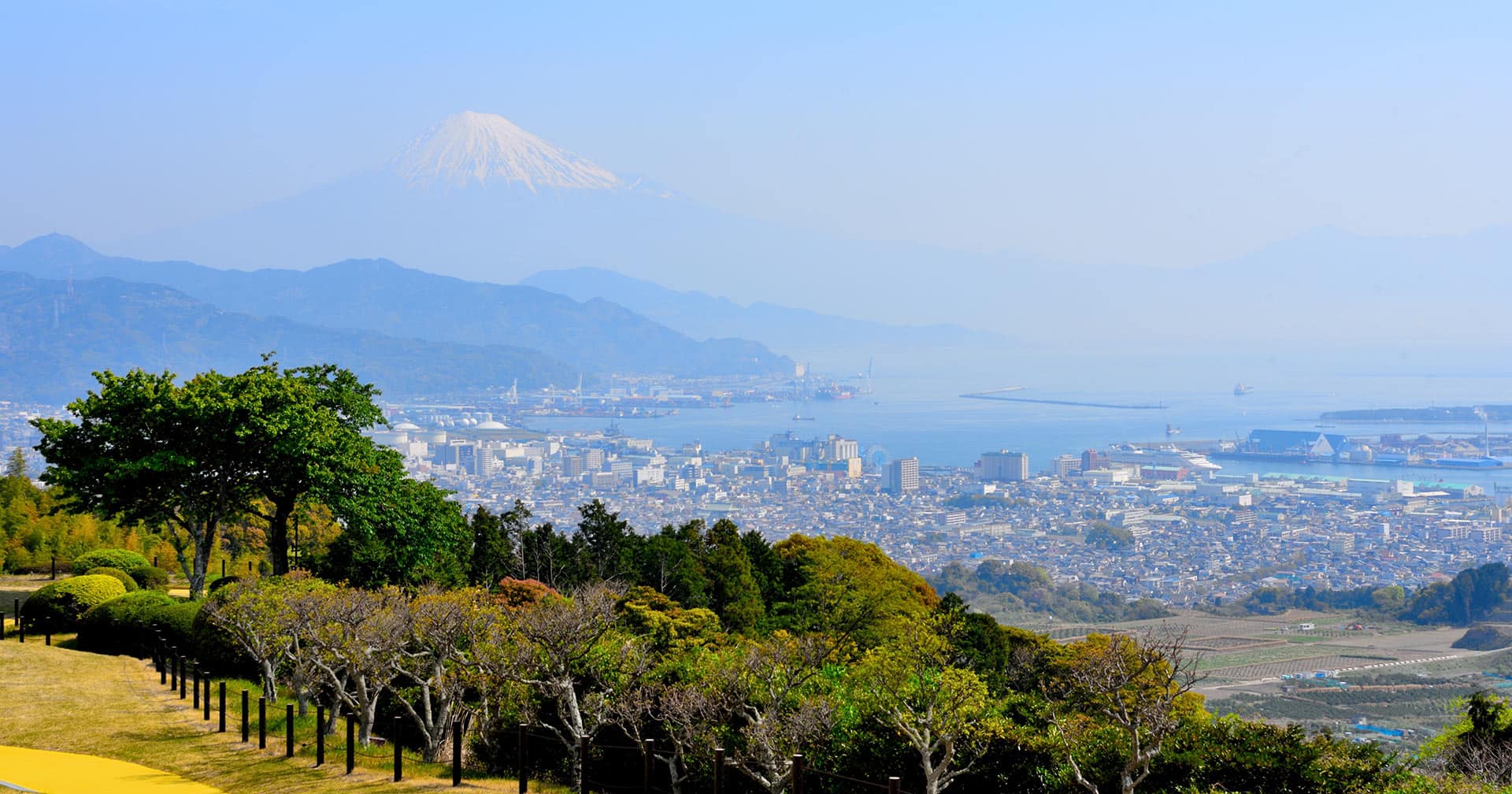

Duración 3 hs.
This mostly panoramic tour affords you magnificent views of Mount Fuji from both a hilltop outlook and a beautiful coastal pine grove so stunningly scenic that artists have captured its beauty for centuries.
Head to Nihondaira Park Outlook, which offers a glorious view of Suruga Bay and majestic Mount Fuji. You might also catch a glimpse of Kunozan Toshogu Shrine, perched high above the outlook.
Your scenic drive takes you to the seaside pine grove - Miho no Matsubara. The grove consists of more than 50,000 pine trees, including a 650-year-old tree thought to have mythical powers. The view from the shore with Mount Fuji lording over the scenery has been rated one of the top three views in Japan.
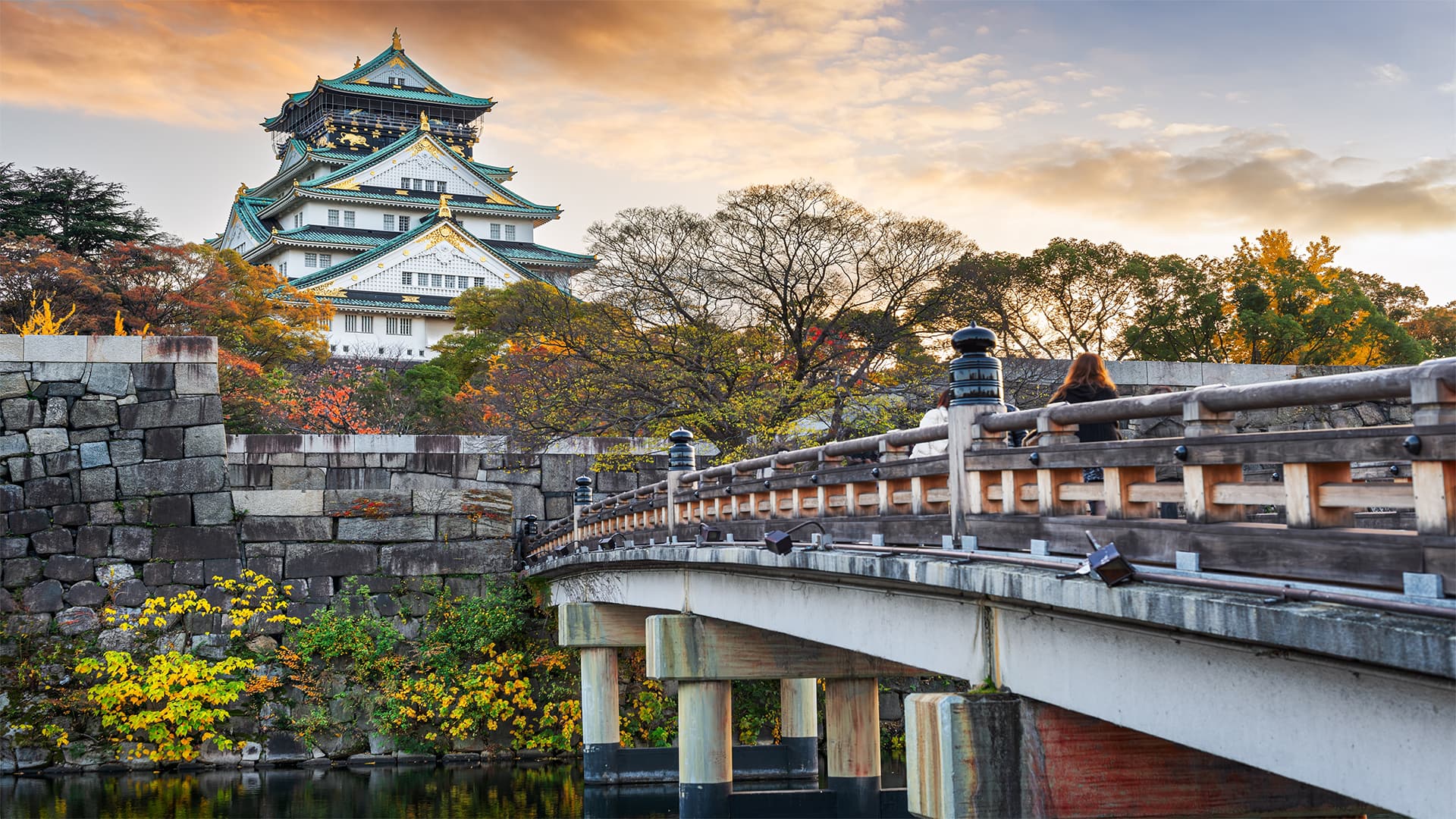

Duración 6 hs.
Behold a downtown castle so iconic that it has become a symbol of the city and then mingle with the locals in two wonderfully bustling shopping districts. Osaka Castle stands at the edge of an urban park with more than 1,200 trees, the majority of them ornamental cherry blossoms and apricots that bloom beautifully in spring. As you meander through the grounds, take note of the massive wall that surrounds the castle. Some of its stones were supposedly carried there from all over Japan to display loyalty to hegemon Toyotomi Hideyoshi, who built Osaka Castle. The atmosphere will become noticeably more energetic in Dotonbori, an entertainment district with countless stores and restaurants. The guide will point out and describe some of the more flamboyant sights – including the massive 3-D-style billboards – after which you will be free to independently explore Dotonbori and neighboring Shinsaibashi, another lively shopping arcade that seems to go on forever.
HIGHLIGHTS
• Stroll through the timeless park surrounding Osaka Castle, the city’s iconic symbol.
• In contrast, follow the guide through an especially vibrant market in Dotonbori.
• Enjoy free time in the Dontonbori and neighboring Shinsaibashi shopping districts.
• Be awed by the sheer number of people shopping in these two areas.
HELPFUL HINTS
• Dress in weather-appropriate clothing.
• Wear flat comfortable walking shoes.
*Los precios varían por barco y fecha de partida. Ver Términos y condiciones
NCL coordina las excursiones en tierra para los huéspedes con el único fin de asegurar su comodidad. Bajo ninguna circunstancia representa o supervisa a las partes o personas propietarias, organizadoras o ejecutoras de dichas excursiones, ya que estas son llevadas a cabo por contratistas independientes. NCL no asume responsabilidad alguna ni garantiza la calidad del servicio prestado por los proveedores de excursiones; el huésped acepta que NCL no será responsable de las pérdidas o daños que puedan surgir de los actos o las omisiones del proveedor.
La participación en actividades y excursiones puede implicar un esfuerzo físico, por lo que puede ser potencialmente peligroso. Es responsabilidad de cada persona determinar si es capaz de realizar alguna actividad. La participación en cualquier actividad o excursión queda bajo la responsabilidad del huésped.
Las fotografías son solo para fines ilustrativos y se utilizan para representar la experiencia de la excursión y es posible que no reflejen con precisión la excursión, el lugar o la actividad indicada.
Nuestras excursiones en tierra para grupos se ofrecen en inglés. Dependiendo de la situación de la reserva, también se ofrecen varias excursiones en alemán, español, francés, italiano o ruso (cantidad mínima de 30 participantes). Los tours que ofrecemos pueden variar de un crucero a otro. Consulta la información detallada de tu excursión en tierra a bordo.

